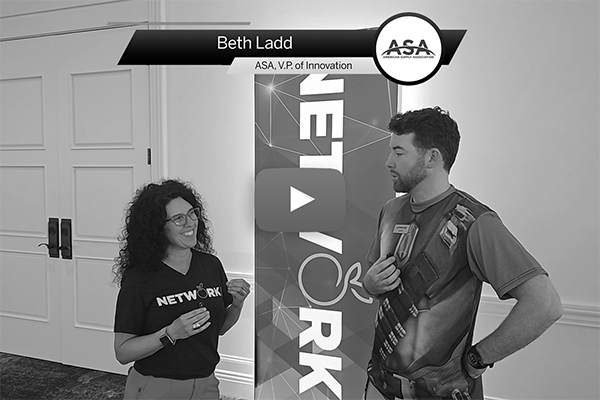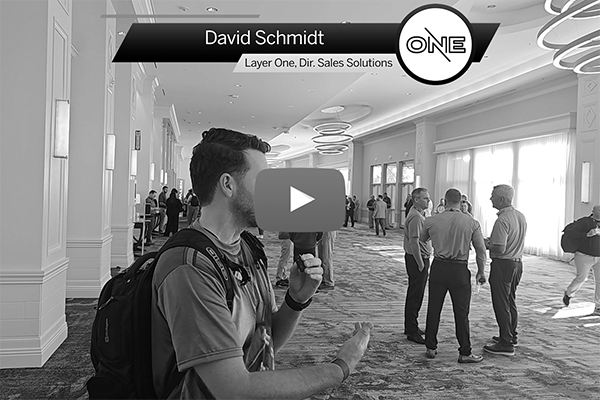LIBRARY
Explore insights on eCommerce and digital platforms for manufacturers and distributors in PHCP, PVF, HVAC, Electrical, Wire & Cable, and more.

Beyond GA4: The Best Google Analytics Alternatives for B2B eCommerce in 2025
GA4 doesn’t work for everyone, especially in complex B2B environments. Discover the best Google Analytics alternatives for manufacturers and distributors in 2025, with tools tailored for SKU tracking, buyer behavior, and real-world outcomes.
B2B eCommerce
Digital Strategy

As Contractors Consolidate Do Relationships Matter
Chances are one of the service trucks you have seen drive by has recently changed hands. Private equity investors have purchased nearly 800 HVAC, plumbing, and electrical companies since 2022.
B2B eCommerce
Digital Strategy

Why are we just doing this now?
Not feeling ready to bring in an outside company is common. But waiting for internal perfection is a recipe for missed opportunities and prolonged inertia.
Digital Strategy
B2B eCommerce

Healthy Site Search is Business Critical
Everyone knows site search for an online store should work “well,” but how strongly does it impact revenue?
Site Search
14 Focus Points

VIDEO: Beth Ladd From ASA at ASA Network 23
We talk with Beth Ladd about all the exciting things coming out of ASA including product data transfer between Manufacturers and Distributors.
Video
ASA

What is Search Intent?
Subtleties in eCommerce product searches can indicate a variety of meaning and desired results.
Site Search
14 Focus Points

VIDEO: Dean Mueller From DSG at ASA Network 23
We Talk to Distribution Expert Dean Mueller from DSG.
Video
ASA

Helping Clients with Product Data
Read about some of the tactics Layer One implements to help our clients achieve product data success.
Product Data
14 Focus Points

VIDEO: ASA Network 23 Recap
See interviews and insights from ASA Network 23 in Orlando.
Video
ASA

Are we at a Disruption Point for PHCP Distribution?
Are we seeing a revenue shift away from distributors that don't have an eCommerce offering?
B2B eCommerce
Digital Strategy

Ecommerce Onboarding (Focus Pt. 7)
Your B2B site is live—now what? Learn how to move wholesale clients from phone calls to online orders with onboarding, incentives, brilliant UX, and more.
14 Focus Points
B2B eCommerce

DSG Guest Post: Are You Getting the Most from Your eCommerce Solution Partner?
Learn how to evaluate and select the right partner.
B2B eCommerce

Growth KPIs (Focus Pt. 6)
From search performance to sales velocity, these 9 KPIs help B2B eCommerce teams identify what’s working and what’s holding them back.
14 Focus Points
B2B eCommerce

Auto Sync Product Data Feeds to PIM
Getting product data from a 3rd party is a great way to provide value to your customers. But how much time and effort are you spending on every import?
Product Data
B2B eCommerce

User Experience (Focus Pt. 5)
Is your B2B eCommerce site built for real buyers? Learn six high-impact UX strategies to streamline navigation, improve ordering, and drive repeat business.
14 Focus Points
UX

Optimizely Performance and Stability
Optimizely performance and stability are critical to successful eCommerce. These are the most common reasons for an underperforming or shaky site.
B2B eCommerce
Optimizely

Empower Search (Focus Pt. 4)
More than half of B2B buyers prefer search to navigation. Ensure you're making products easy to find and buy.
14 Focus Points
Site Search

Product Data Quality (Focus Pt. 3)
It's no secret that having quality product data drives sales. The priorities are accuracy, completeness, and consistency, but are you leveraging all dimensions of the data? Layer One takes a holistic look at product data quality with actionable optimization strategies.
14 Focus Points
Product Data

Iterative Thinking (Focus Pt. 2)
A stepped approach to testing and refining through a feedback cycle is key to digital success.
14 Focus Points

Site Performance/Stability (Focus Pt.1)
If your site doesn't operate well customers won't use it and Google will bury it. Regardless of any other features and improvements, a site should first perform and be stable.
14 Focus Points

Distributor eCommerce Now 20 Percent of Sales and Accelerating
Predictions of a post-COVID slump in online usage didn’t materialize for distributors. Instead, all those folks who got used to buying online when they didn’t have a choice have embraced the channel and – apparently – talked their coworkers into joining the digital customer club.
B2B eCommerce
Digital Strategy

The Future of HVAC: Attending the 2023 Auer Expo
Attending the Auer Expo was a fantastic experience that provided insights into the latest developments in the HVAC industry. The event brought together a diverse group of engineers, dealers, industry experts, and manufacturers from around the world, creating a vibrant atmosphere for learning and networking.
B2B eCommerce
Digital Strategy

What Engineers Want from a Manufacturer’s Website
The B2B buying market has changed radically for almost all professions, and engineers are no exception. Here's what engineers said they wanted in their shopping experience, and what may happen if companies don't adapt.
Digital Strategy
B2B eCommerce

Personalization in B2B eCommerce
B2B buying is complex and involves various departments, all while customers want to minimize the time and effort it takes to make purchasing decisions. Learn how to understand your customer on a deeper level using the right data for B2B, B2C, and B2X buyers alike.
Digital Strategy
B2B eCommerce

Processing JSONL
Quick demonstration of JSONL, a data format that is appearing in more and more systems.
SOFTWARE ARCHITECTURE

The Pitfalls of JavaScript Libraries
JavaScript libraries have revolutionized web development by providing developers with powerful tools, frameworks, and pre-built components to expedite the creation of interactive and feature-rich web applications. However, a growing trend of incorporating an excessive number of JavaScript libraries into projects can introduce pitfalls that developers need to be mindful of.
User Experience
SOFTWARE ARCHITECTURE

Dazzlingly Easy Sitecore Content Comparison with Razl
This post introduces a tool called Razl, which is very helpful in moving Sitecore items between environments.
Sitecore

What you need to know about event driven architecture
There are many architectures available to the development teams; in this post we take a look at event driven architecture. Whether building a new system or maintaining an existing system, we'll examine the basic components and the benefits of the design.
SOFTWARE ARCHITECTURE

The Differences Between JSS React Developer Modes
With multiple development modes available, we review the pros and cons to working in disconnected, connected, or integrated mode.
Sitecore

Getting final Sitecore configurations anywhere, anytime, with Sitecore ConfigBuilder
Sometimes you need access to the final Sitecore configuration file, but you can't make use of ShowConfig.aspx
Sitecore

Providing Content Customization
Content Authors deserve more flexibility. Here is how we provide a more dynamic experience.
User Experience
Umbraco
Sitecore

Creating Your First JSS React Application
A step by step guide laying the foundation to building your first Sitecore JSS React application.
Sitecore

Content Security Policy Management in Sitecore
Our new Security Header Accelerator allows marketers to run experiments with an agile mindset more easily.
Sitecore

Prevent XSS Attacks with a Nonce in the Content Security Policy
Cross Site Scripting attacks can be a danger to visitors of your website. This post explains how to prevent them using a nonce in your Content Security Policy.

Screencast - Triggering Marketing Automation Campaigns
Sitecore's Marketing Automation engine is a powerful tool in your toolbox. We will cover how to trigger an automation campaign in this screencast.
Sitecore
Video

Screencast - Installing Sitecore Forms Extensions
Sitecore Forms Extensions allows for 9.0 - 9.3 Sitecore customers to quickly capture xDB contacts. This screencast covers how to install Sitecore Forms Extensions and configure your first form to capture the data.
Sitecore
Video

Screencast - How to Publish a Sitecore Form
Sitecore Forms is a powerful WYSIWYG form editing tool. This video covers the flow to publish a Sitecore Form.
Sitecore
Video

Screencast - Introduction to SXA Rendering Variants
SXA Rendering Variants allow for rapid, iterative development. Learn more about Rendering Variants in this screencast.
Sitecore
Video

Webinar - Strategies for Maturing Your Ecommerce Experience
Navigating the commerce space is harder today than it has ever been. How do you know where you are compared to your peers? What is a logical next step? How much will it cost? In this webinar your hosts from Layer One and Sitecore will begin to answer these questions for you.
Digital Strategy
Sitecore
B2B eCommerce

HTTP Header Series: Feature-Policy
In our opening to this series, we discussed some of the reasons for Security Headers. In this post we will describe in more detail the (currently experimental) Feature-Policy header which provides a mechanism to allow and deny the use of browser features.
Optimizely
Umbraco
Sitecore

HTTP Header Series: Referrer-Policy
In our opening to this series, we discussed some of the reasons for Security Headers. In this post we will describe in more detail the Referrer-Policy header which controls how much information is sent in the Referrer HTTP header.
Optimizely
Sitecore
Umbraco

HTTP Header Series: Content-Security-Policy
In our opening to this series, we discussed some of the reasons for Security Headers. In this post we will describe in more detail the Content-Security-Policy header that allows web site administrators to control resources the user agent is allowed to load for a given page. This header is critical is defending against cross-site scripting attacks.
Optimizely
Sitecore
Umbraco

Four things you wanted to know about Sitecore JavaScript Services
There are lots of great reasons to choose a Sitecore JSS site. From a software development perspective, Sitecore JSS embraces the most modern development practices and paradigms.
Sitecore

HTTP Header Series: The "Xs"
In our opening to this series, we discussed some of the reasons for Security Headers. In this post we will describe in more detail some of the security headers that still bear the “X” prefix
Optimizely
Sitecore
Umbraco

HTTP Header Series: HTTP Strict Transport Security
In our opening to this series, we discussed some of the reasons for Security Headers. In this post we will describe in more detail the need for the HSTS header.
Optimizely
Sitecore
Umbraco

HTTP Header Series: Security Headers
Understand how defining these HTTP headers can help reduce your site vulnerability and make the user experience more secure.
Optimizely
Sitecore
Umbraco

The European General Data Protection Regulation Change Is The Biggest Since 1995
Layer One Media’s clients do business worldwide. As such, they are constantly collecting data on their customers and website visitors. Recently, the EU and Parliament adopted new regulations that will not only effect third party cloud providers but the companies that collect data as well. Following is a bulletin we think you’ll find helpful in preparing for the change.
Digital Strategy

Sitecore Commerce Accelerator leverages Sitecore Commerce
Sitecore Commerce is ready for manufacturers and distributors. We've pre-built the features most B2Bs are looking for Multi-Featured Homepage and search, Multiple Payment Processing Options, Welcome and View Personalization, Product Category, Listing and Detail,Cross-Sell, Up-Sell products and more!
Sitecore

Configuring Dependency Injection in Umbraco
This webinar will explore pre-sales, sales and post sales personalization tactics that will make your company easier to do business with and build digital brand loyalty.
Umbraco

Decreasing Umbraco Feature Development Time with Models Builder
ModelsBuilder is a tool that is built into the Umbraco platform since version 7.4. What it does is allow the development team to use the Umbraco back office to define the necessary document types for a feature. Then the tool will generate the files necessary for the developer to begin interacting with the document types in the code.
Umbraco

Why is B2B Commerce so difficult?
Manufacturers and Distributors are hearing the call from their customers – “lower costs and be easier to do business with!” For most, this means providing a streamlined digital commerce experience from relevant information to fulfillment and post-sales support. So what do I keep hearing from manufacturers as to why B2B digital commerce is so hard?
B2B eCommerce
Digital Strategy

4 Key Considerations for Integrations
Creating meaningful integration is where the distinction between creating business value and busywork lies. Poor integration adds to maintenance, may cause your site to load slowly and more to keep track of in the long term. So, the question becomes: how do you determine what provides the most meaningful business value that becomes most useful to integrate with?
Digital Strategy

Managing Channel Conflict with Extended Supply
Since the early 90s, the trend in mid and large size B2B companies has been to consolidate their decentralized procurement groups and streamline their supply chain operations optimizing their buying power, supplier relationships and of course, reduce cost. This optimization typically lends to procurement groups purchasing product and services for multiple ship-to locations.
B2B eCommerce
Digital Strategy

Post-Sales: B2B Digital “Ease of Doing Business”
In the second post, we reviewed digital pre-sales for digitally servicing your customers and the third focused on sales phase. As the fourth and final in a four-part series, we will review the critical post-sales phase for Digitally servicing B2B Customers.
B2B eCommerce

All about the Sitecore Commerce Profile System
The Sitecore Commerce profile system is one of the remaining legacy Commerce Server sub-systems, and like the other Sitecore Commerce systems is incredibly flexible but somewhat complicated. This post will give you the run down on the what, how and why so you can familiarize yourself with designing or developing against the system.
UX
B2B eCommerce
Sitecore

Sitecore Personalization - Why and How
Why is personalization so important? Simple, you want to provide the best possible experience to your prospect or customer. This is absolutely critical. You want every interaction with your customer to be as effective and efficient as possible, this requires at least a certain amount of knowledge of your customer but obviously, you can never have too much data from which to make decisions.
UX
Sitecore
Digital Strategy

Five things you wanted to know about Sitecore Commerce
Is your organization thinking about the new release of Sitecore Commerce announced at the National Retail Federation show earlier this year? It doesn’t matter if you are in the world of B2B or B2C, online commerce platforms are significant in myriad ways to businesses and that is why Sitecore has invested so heavily in the platform. As one of the 19 Global Sitecore Commerce MVP’s, I’d like to take a moment to answer some of the top-level questions that people often have about the platform.
B2B eCommerce
Sitecore

Converting B2B Customers through Digital Sales Services
As the third in a four-part series, I want to discuss delivering sales phase capabilities involved with the “Being-Serviced” B2B Customer. In the first post, I introduced the “Being-Serviced” B2B Customer as those that will have matured beyond requiring superior “Self-Service” capabilities to those that will want to “Be-Serviced”. Understanding what this means within your industry, to your Partners and End Customers will be critical.
B2B eCommerce
UX